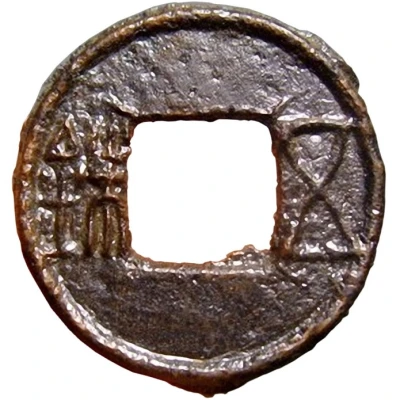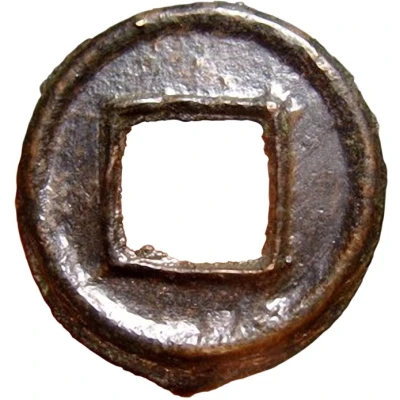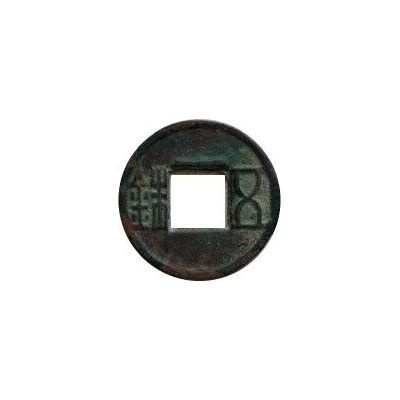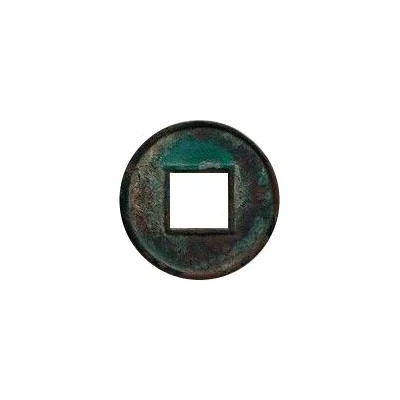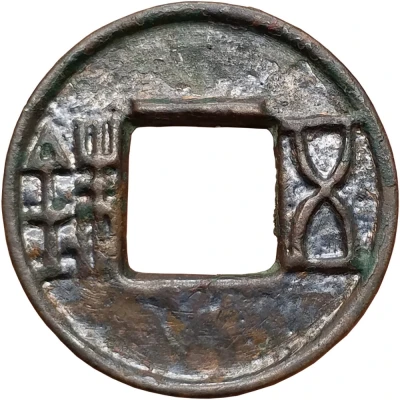
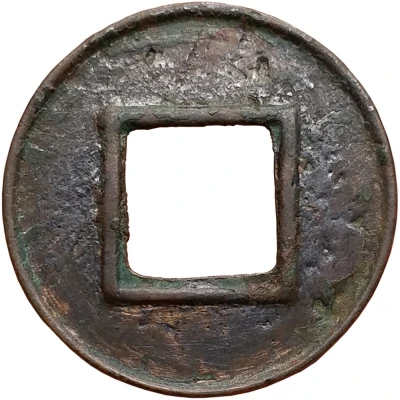

© Christopher Li
5 Zhu "Western Han" type; filed edge 115 BC - 113 BC
| Copper | 4.59 g | 25.3 mm |
| Issuer | China (ancient) |
|---|---|
| Period | Western Han Dynasty (202 BC - 8 BC) |
| Type | Non-circulating coin |
| Years | 115 BC - 113 BC |
| Value | 5 Zhu |
| Currency | Zhu (119 BC to 9 AD) |
| Composition | Copper |
| Weight | 4.59 g |
| Diameter | 25.3 mm |
| Thickness | 2.1 mm |
| Shape | Round with a square hole |
| Technique | Cast |
| Orientation | Medal alignment ↑↑ |
| Demonetized | Yes |
| Updated | 2024-10-09 |
| Numista | N#240422 |
|---|---|
| Rarity index | 74% |
Reverse
Blank (uniface).
Edge
Plain
Comment
The "Western Han" type is differenciable from the "Eastern Han" type in the top horizontal of the right radical of Zhu: the "Western Han" type is flat whereas the "Eastern Han" type is cuved.These are called Chize Wuzhu (赤仄五銖), which is derived from its shiny red edge attained after filing. Zhongguan Wuzhu (鐘官五銖) is another term used by Chinese numismatic society.
This type was introduced in 115 BC as part of the 5th monetary reform during reign of Emperor Wu of the Western Han dynasty. The monetary reform aimed to rectify flaws arising from the original introduction of 5 Zhu coins in 118 BC, which involved filing the edges to prevent people from clipping copper.
The policy restricted Junguos (Principalities and Commanderies) to pay their taxes using only these Chize Wuzhus. With one Chize Wuzhu worth five local Junguo Wuzhus (due to the reduced amount of copper), the local officials suffered losses through paying taxes to the central government. As the result, the income was stabilized while creating a "punishment effect" to the local officials who allowed the collapse of the new monetary system.
The Chize Wuzhus were not intended for general circulation, and because the coins were ultimately a flow back to the central treasury, there was not a need to produce large amounts of these pieces.
Although the monetary reform caused a huge impact to the Junguos, they managed to limit the effects by imitating the Chize Wuzhus, leading to challenges in differentiation between authentic ones and imitation ones. The monetary reform was then abolished less than 2 years after implementation, and was followed by the 6th monetary reform in 113 BC.
Interesting fact
One interesting fact about this coin is that it features a unique filing edge, which was a common feature of ancient Chinese coins. The filing edge was created by carefully filing the edges of the coin to create a series of grooves, which helped to prevent counterfeiting and also made the coin easier to stack and store. This feature, combined with the coin's copper composition and intricate design, makes it a valuable and sought-after collector's item among numismatists.
